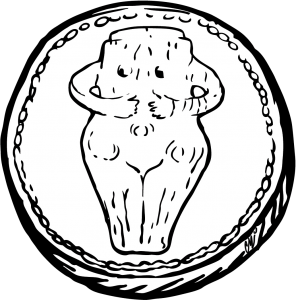 MIRACULOUS HEALINGS: „NICOLAE GRIGORESCU (1838-1907)”
MIRACULOUS HEALINGS: „NICOLAE GRIGORESCU (1838-1907)”
Opened in June at the Suțu Palace, the exhibition “Nicolae Grigorescu (1838-1907)” is part of the “Miraculous Healings” project and aims to introduce the public to nine heritage paintings of the Bucharest Pinacothque, brought back to their original looks after restauration.
“That symphony of lines, tones, shadows and light, that union of all the elements that, under the rays of a happy moment, make an object appear beautiful, that you will never find. After one hour the world looks different, and you are different” – these are the words of Nicolae Grigorescu as recorder by Alexandru Vlahuță.
The exhibition remains open until September 2nd 2018.
As time changes us from one moment to another, so has Grigorescu’s work changed in the interpretations of art critiques from one period of time to another. The exhibition project we bring forward, “Miraculous Healings”, one this occasion aims to rediscover the master’s technique. During the preparations of the exhibition, experts have found what they consider to be the very fingerprint of the Master.
The artwork on which this fingerprint was found is called “Portrait of a woman with red ribbon” and is on display at the exhibition. The museum invested large efforts into carrying out expert examinations that would offer as much information as possible about the “unusual signature”.
This way, an expert team at the Centre for Restoration by Optoelectronic Techniques (CERTO), part of INOE 2000 (National Institute of Research and Development for Optoelectronics), compiled a package of investigations and analysis. These revealed the characteristics of the materials and the composition’s structure, including incipient or advanced degradations through which aesthetic details and surface accidents of the Grigorescu’s painting surfaced out. The intelligent corroboration of this data led not only to identifying the fingerprint, but also to explaining its origins with scientific arguments.
The research and investigation report was issued by INOE and signed by scientific researcher Roxana Rădvan and her colleagues. The multi and hyper spectral image analysis, the X-rays and microscope analysis performed by the team, indicate that this detail (the fingerprint), was deeply embedded in the raw structural layer of paint, not just the top superficial layer.
“We are, thus, giving back the public a part of Nicolae Grigorescu’s paintings belonging to the Pinacotheque’s heritage. Coming from later donations or acquisitions, some of them have an unknown past, but their beauty speaks for itself. We tried to show different faces of the painter’s techniques, trying to grasp his artistic evolution. In Grigorescu’s case, the “healing” was an act demanded not by memory but by conscience, an act that came about as a process of rediscovery. Meaning that we rediscovered aspects such as the smallest pigment he used down to the most complex composition, and here I refer to “The Transport of Provisions”. This painting was done after the Independence War in 1877, and the painter particularly chose the black and white tones to capture the pain more effectively. Grigorescu created very few paintings using this technique. If we usually think of Grigorescu’s landscapes, trying to find the way in which he integrated the human figure in the landscape, this time we offer for display a series of the Master’s portraits where the human figure, more precisely the woman, is the central character. <<The objects that represent the motifs a landscape, the trees, the structures of land, the beings that inhabit and animate it, are as much obstacles of varied forms that the sun rays touch in their way, strongly emphasizing some of their parts while leaving others in the shadows.>> (George Oprescu, Nicolae Grigorescu, Meridiane, 1961). Therefore, if this is how things are in his landscapes, with regards to his portraits we can say that something of the landscape comes to intensify the figure. His brushstrokes create games of lights that seem to try to outline the very personality of the characters. The play of gazes is also captured as sometimes the characters look at us, and some other times they gaze into the distance, but we are in fact witnessing a gaze directed towards their inner self. Perhaps the most representative such figure is “Lost Profile” because the pose that Grigorescu painted, a woman with her back turned at the viewer, is in fact revealing more frailty and femininity. “Lost profile”, having been painted in France, is signed Grigoresco. The exhibited work aims to get the viewer involved in order to discover these dualities – close-far, brushstroke detail-general ensemble, micro-macro – and to feel the harmony of lines, the tones of shadows and lights, while admiring Nicolae Grigorescu’s paintings at the Suțu Palace.” – Drd. Marinescu Delia


